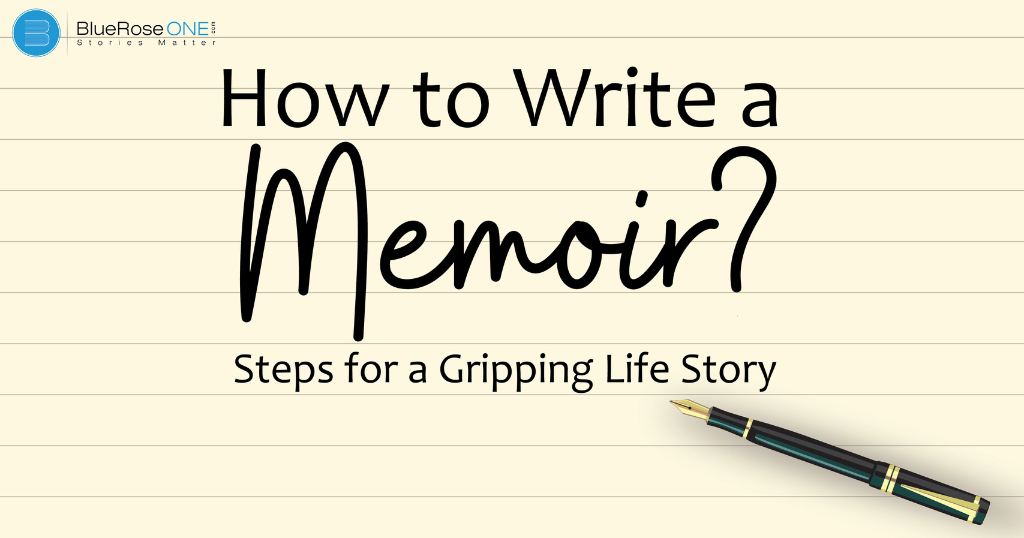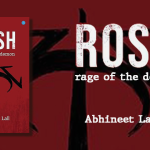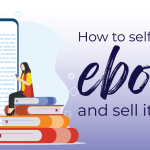What is a Memoir?
A memoir is a nonfiction story about a certain time, topic, or feature of someone’s life. It is an intensely intimate story that digs into the author’s recollections, feelings, emotions, and reflections. A memoir, as opposed to an autobiography, focuses on specific events, relationships, or experiences in order to portray a greater truth or understanding.
Read: What is an ISBN number? Things to Know about Publishing Industry!
It frequently combines storytelling with personal reflection, encouraging readers to connect on an emotional and empathetic level with the author’s experience. Memoirs provide a distinct viewpoint, expressing the essence of a life via vivid storytelling and an intimate investigation of the author’s experiences.
What all includes in a Memoir?
Here’s a list of things that are included in a Memoir –
- Personal Experiences
- Emotions and Reflections
- Character Development
- Themes and Lessons
- Descriptive Storytelling
- Authentic Voice
- Narrative Arc
- Honesty and Vulnerability
- Impactful Writing
- Resolution or Reflection
- Personal Experiences: Memoirs thrive on the author’s vivid recollection of life events, conversations, and pivotal moments. These details provide a tangible sense of the author’s world, allowing readers to immerse themselves in the narrative’s authenticity and relatability. The specificity of these experiences breathes life into the memoir, fostering a profound connection between the author’s life and the reader’s imagination.
- Emotions and Reflections: Memoirs delve into the emotional landscape of the author, unravelling the complexities of their feelings, thoughts, and inner journey. Through introspection, authors reveal the raw, unfiltered emotions tied to their experiences. This intimate exploration enables readers to empathise, forging a deeper connection and understanding of the author’s vulnerabilities, growth, and resilience.
- Character Development: Memoirs are not solely about the author but also the individuals who shaped their journey. Authors craft multidimensional characters, including themselves, highlighting their evolution, flaws, and relationships. This depth allows readers to witness the dynamic interplay between characters, creating a nuanced portrayal that mirrors the complexities of real-life interactions.
- Themes and Lessons: Memoirs often revolve around overarching themes such as resilience, love, loss, or personal growth. These themes serve as the guiding threads, weaving through the narrative and offering insights and valuable lessons derived from the author’s experiences. They provide a universal resonance, inviting readers to reflect on their own lives and beliefs.
- Descriptive Storytelling: Engaging memoirs employ descriptive storytelling techniques that paint vibrant scenes, evoke sensory experiences, and transport readers to the author’s world. Through vivid descriptions, authors breathe life into memories, enabling readers to visualise and emotionally engage with the settings, events, and people depicted in the memoir.
- Authentic Voice: The heart of a memoir lies in the author’s authentic voice—a distinct perspective that infuses the narrative with genuineness and relatability. This voice encapsulates the author’s personality, beliefs, and unique view of the world, fostering a genuine connection with readers who resonate with the author’s authenticity.
- Narrative Arc: A memoir, akin to fiction, benefits from a structured narrative arc. This framework organises the author’s experiences into a cohesive storyline, offering a logical progression from beginning to end. It weaves together events, emotions, and reflections, ensuring a smooth flow that captivates readers while providing a sense of purpose and direction to the narrative.
- Honesty and Vulnerability: Essential to a compelling memoir is the author’s courage to lay bare their truths, vulnerabilities, and candid reflections. Honesty infuses credibility, fostering a genuine connection with readers. By embracing vulnerability, authors invite empathy and resonate with readers who appreciate the raw, unguarded portrayal of human experiences.
- Impactful Writing: Memorable memoirs rely on the author’s adept use of language, employing metaphors, vivid imagery, and evocative prose. Skillful writing techniques evoke emotions, leaving a lasting impression on readers’ minds and hearts. The mastery of language heightens the emotional impact of the narrative, enriching the reader’s experience.
- Resolution or Reflection: A memoir culminates in a reflective conclusion that ties together the narrative’s threads. This resolution offers closure, understanding, or contemplation, leaving readers with a sense of fulfilment or introspection. It encapsulates the author’s growth or the lessons learned, leaving an indelible mark on the reader’s perception of the author’s journey.
You may also like: What is External Conflict? Definition, Examples and Writing Tips
How to write a Memoir?
Here are some steps to write a great memoir for your book –
- Reflecting on the intent behind penning a memoir
- The selection of a focal point in a memoir
- Establishing a compelling starting point
- Developing vivid characters
- “Show, don’t tell”
- Crafting a compelling narrative
- Effective dialogue breathes
- Navigating emotions
- Supporting details and scenes enrich
- Addressing themes and lessons
- Diligent editing and revision
- Seeking feedback and constructive criticism
- Finalising your memoir
Step 1: Reflecting on the intent behind penning a memoir is akin to setting the compass for your narrative journey. It’s pivotal to delve into motivations, whether it’s preserving personal history, imparting wisdom, or healing through storytelling. Understanding this purpose anchors the memoir, infusing it with authenticity and direction. Encourage readers to explore their motives earnestly, clarifying what they wish to achieve. Aligning intent with the narrative goal empowers writers, guiding them to uncover the profound significance of their story and connect deeply with readers through shared experiences and emotions.
Step 2: The selection of a focal point in a memoir is akin to framing a masterpiece. Choosing a specific theme, period, or aspect of life channels the narrative’s depth and resonance. Encourage readers to deliberate on pivotal moments or overarching themes that encapsulate their journey authentically. This deliberate focus aids in maintaining coherence, preventing narrative dilution or vagueness. By narrowing the story’s scope, authors ensure readers remain engaged and connected throughout the memoir. This process allows for an immersive exploration of the chosen facets, enabling a profound, impactful storytelling experience.
Step 3: Establishing a compelling starting point is pivotal; it hooks readers into your story’s world. This initial scene or moment sets the tone, capturing attention and sparking curiosity. It should encapsulate the essence of your narrative while propelling readers into the unfolding journey, enticing them to explore further.
Step 4: Developing vivid characters, including yourself, involves more than mere physical descriptions. Infuse depth into characters by revealing their quirks, motivations, fears, and growth. This adds authenticity, enabling readers to empathise with and connect deeply with the individuals populating your memoir.
Step 5: “Show, don’t tell” is a guiding principle. Instead of stating emotions or experiences outright, employ descriptive language to create sensory experiences. Engage readers by painting vivid scenes, allowing them to feel and experience the story alongside you.
Step 6: Crafting a compelling narrative arc involves structuring your story cohesively. Beginnings, middles, and ends shape the trajectory, ensuring a satisfying and purposeful flow. Introduce conflict, build tension, and offer resolution, creating an engaging journey for readers.
Step 7: Effective dialogue breathes life into your memoir. It reveals personalities, advances the plot, and adds authenticity. Use dialogue to convey emotions, relationships, and pivotal moments, ensuring it contributes meaningfully to the narrative.
Step 8: Navigating emotions with honesty and vulnerability is crucial. Embrace authenticity by candidly sharing your feelings, thoughts, and vulnerabilities. Readers connect deeply with genuine emotions, fostering empathy and resonance.
Step 9: Supporting details and scenes enrich your memoir’s tapestry. Infuse sensory elements, vivid settings, and nuanced descriptions to immerse readers in your experiences. These details lend depth and authenticity, creating a vivid and memorable reading experience.
Step 10: Addressing themes and lessons learned adds depth and resonance. Reflect on overarching themes, extracting valuable insights and lessons from your experiences. Offer wisdom gained from challenges or moments of growth, allowing readers to relate and learn alongside you.
Step 11: Diligent editing and revision polish your memoir. Refine language, structure, and pacing to enhance readability and coherence. Edit with a critical eye, ensuring clarity and consistency throughout.
Step 12: Seeking feedback and constructive criticism is invaluable. Share your work with trusted peers or writing groups. Embrace diverse perspectives, using feedback to refine and strengthen your narrative.
Step 13: Finalising your memoir entails confidence in your story’s authenticity and impact. Embrace the journey, trust your narrative choices, and conclude with assurance, knowing you’ve crafted a compelling, resonant memoir.
Read: Best Book Title Ideas: Generate Best Selling Titles Now.
The process of writing a riveting memoir includes thirteen crucial steps, each of which is critical in weaving a fascinating tale. The underlying pillars include purpose reflection, topic selection, and building a fascinating start. Creating realistic characters, employing descriptive language, and creating a captivating arc bring your narrative to life. The narrative’s power is enhanced by effective language, emotional honesty, and rich supporting elements.
The final phases include addressing topics, thorough editing, soliciting comments, and confidently finishing your memoir. These procedures will enable you to share your experiences truthfully and deeply with readers. Accept this path with courage, knowing that your narrative, laced with honesty and purpose, has the power to fascinate and inspire.
Publish your book with BlueRoseONE and become a bestselling author. Don’t let your dream of becoming an author fade away, grab the opportunity now and publish your book – be it fiction, non fiction, poetry or more.
















